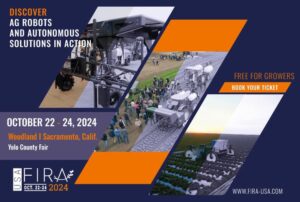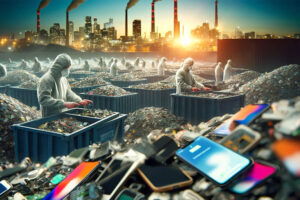 IoT is the mean that allows to connect physical objects to the cloud. The range of applications is broad, from individual sensors, to devices, vehicles, machines, buildings, factories, and entire cities. These connections unlock great potential as the data collected from physical objects can be used to increase knowledge, allowing the implementation of new business models, and enabling the profound digital transformation that we are currently witnessing around the world.
IoT is the mean that allows to connect physical objects to the cloud. The range of applications is broad, from individual sensors, to devices, vehicles, machines, buildings, factories, and entire cities. These connections unlock great potential as the data collected from physical objects can be used to increase knowledge, allowing the implementation of new business models, and enabling the profound digital transformation that we are currently witnessing around the world.
IoT-driven observations often concentrate on the process of data collection, focusing on the results obtained from the data transfer from the assets to the cloud. However, as important that may be, the opposite data flow (from the cloud to the assets) offers as much or in some cases even more value. By sending instructions, configurations and entire new firmware packages to the assets, organizations are able to remotely, and if desired automatically, control each and every asset.

These two key functional data flows of IoT (collection/transfer and control) act as support factors towards today’s sustainability efforts. In fact, scaling concrete sustainable solutions that will change the 21st century panorama will not be possible without IoT. Sustainability needs IoT, and IoT needs sustainability. Sustainable solutions drive the development of IoT, which in turn needs to be (or become) sustainable to operate.
Sustainable Energy Production
In Europe, too often we see news headlines as: “Cities announce the stop in approval of new construction projects due to limitations in the electricity grid capacity” or “The shutdown of a large gas-fired power station has been postponed due to rising electricity demands and insufficient resources”. Overloaded electricity grids and the need to maintain large fossil fuel-based electricity production are just some of the many cases in which the energy transition is constantly challenged. As straightforward as it may sound, IoT can be the solution to alleviate many of these problems, or even definitively solve them.
A closer look reveals that the grid limitations are caused by redundancy requirements. In other words, the managers of grids prefer maintaining a certain spare grid capacity in order to meet the agreed reliability standards. If, for example, a substation goes down and part of the grid is out of service, the spare capacity of the remainder of the grid should be able to absorb this extra duty such that end users do not experience any outages.
Statistical analysis of potential outages of equipment are part of the model that is used by engineers to determine the spare capacity requirements, leading to diverse outcomes. By simply adding IoT to the transformers and switchgear in substations, the state of the equipment can be constantly monitored, delivering real time data. With the data that is collected and through smart data processing, some outages can be predicted and avoided – or taken as a scheduled outage instead of an unscheduled one.
For the issue of not being able to follow up with the pre-established processes of closing fossil-fuel power plants, a similar reasoning can be followed. Fossil fuel plants give a stable source of energy, while renewable power plants can be more unpredictable since they rely on environmental conditions (sun, wind…). The renewable energy picture can also be greatly improved by IoT and data projections, leading to a more stable (or predictable) energy scenario.
Sustainable Buildings
Every year, buildings consume about 40% of the energy produced worldwide. Said so, the energy transition towards a sustainable future is not feasible without addressing the high consumption of energy used by buildings. There are many initiatives to improve this issue, one of which is the introduction of Near Zero Energy Buildings – or NZEBs. These buildings produce electricity through PV installations and other technologies. At times this production is sufficient to satisfy the electricity need of the building, or even exceed it, delivering the extra production to the electricity grid. Since the building relies on energy generators that depend on weather conditions (as for example solar panels), there are times in which buildings need to take electricity from the grid. If during a year time, there is a balance between the extra energy inputted in the grid, and the one took from the grid, the building is considered to be “Zero Energy”.
Conceptually, this may seem straightforward; practically, it is not. The construction of buildings is often cost driven, and it involves many contractors, subcontractors, equipment suppliers and others. In addition, there are strict regulations and vested interests that make innovating construction processes difficult.
With IoT, the steps towards implementing the needed solutions for creating NZEBs are easier to take. IoT solutions provide more information about the real-time state of a building and its equipment, enabling a higher degree of control. Moreover, IoT solutions can be added to the construction even after its completion. As one of many examples, it is possible to add a zero-energy wireless sensor network in an existing building, that enables demand driven heating, cooling and ventilation.
Sustainable Agriculture
IoT can boost agriculture’s efficiency, and can bring agriculture closer to people and the markets. By measuring the soil conditions, collecting real-time data on specific areas, and taking advantage of accurate weather predictions, irrigation processes can be correctly optimized. As an example, just by switching on the irrigation system only when needed, for as long as needed, we can register a significant improvement in crop production, and a positive impact on the environment due to the decrease in water consumption. The key is to understand when to act, rather than standardizing pre-defined actions.
Agriculture products tend to be transported over long distances to reach distribution points. It is essential to re-evaluate this pattern, especially when wanting to reduce the crop’s carbon footprint and work towards a more sustainable future. One of the many solutions to this issue, is making farming more available near city areas. We can see that this trend is taking over through urban farming and the increasing popularity of local farmer’s markets. These are usually small producers that inevitably compete against the mega farming industries, and that therefore need concepts like precision agriculture to help develop their crops. By using advanced sensing technologies, real time data collection and advanced data processing, the production processes in these smaller farming environments can be optimized, allowing a more competitive cost-to-product.
Energy Harvesting
Although the energy-use of IoT devices pales against the energy savings that they can deliver, it is essential to make sure that IoT devices do not become the sustainability problem of the future. Luckily, it is encouraging that significant advances have been made, and that concepts like energy harvesting are starting to become more popular. In the last few years, several IoT sensors and devices have been adapted to become completely powered through conversion of light, temperature, movement or energized through radio signals. These solutions show that optimum configurations can be found through efficient energy transformation, smart power conditioning and optimalisation of use cycles. The use of these and other energy neutral IoT solutions will accelerate in the coming years, as these technologies advance and further optimize.
Biodegradable Electronics
Another impact IoT has on the environment relates to the high use of electronics needed for data transmission and hardware systems. Almost all IoT sensors and devices use electronic components that inevitably generate environmental pressure at the end of their lifecycle. Especially in a rapidly changing field like IoT, economic lifecycles tend to be short as new solutions replace older ones. The use of biodegradable electronics can provide significant benefits in this regard. Biodegradable electronics are still limited to laboratories and small-scale testing, but as with other tech innovations of recent years, it is expected for them to find their way to commercial products in the near future. As an example, in agriculture, these new biodegradable elements would be of extreme benefit since the sensors and IoT devices could be distributed throughout the fields, without having to be recovered and without leaving a negative impact on the environment.
Reducing Energy Consumption
You do not have to produce energy that you do not consume. In the end, the largest gains can still be made in areas where energy is wasted. In many cases lights, ventilation systems, Wi-Fi routers, cooling systems and many other energy consumers are operated with simple control systems that limit demand driven use. Similarly, maintenance plans with site visits are often scheduled based on regular intervals without considering the actual needs on an asset. By adding IoT communication solutions to these assets, and by bringing the information that’s “hidden” within these assets via IoT systems to on line dashboards and portals, we can substantially improve the experience, increasing the sustainability efforts, while simultaneously reducing costs.















